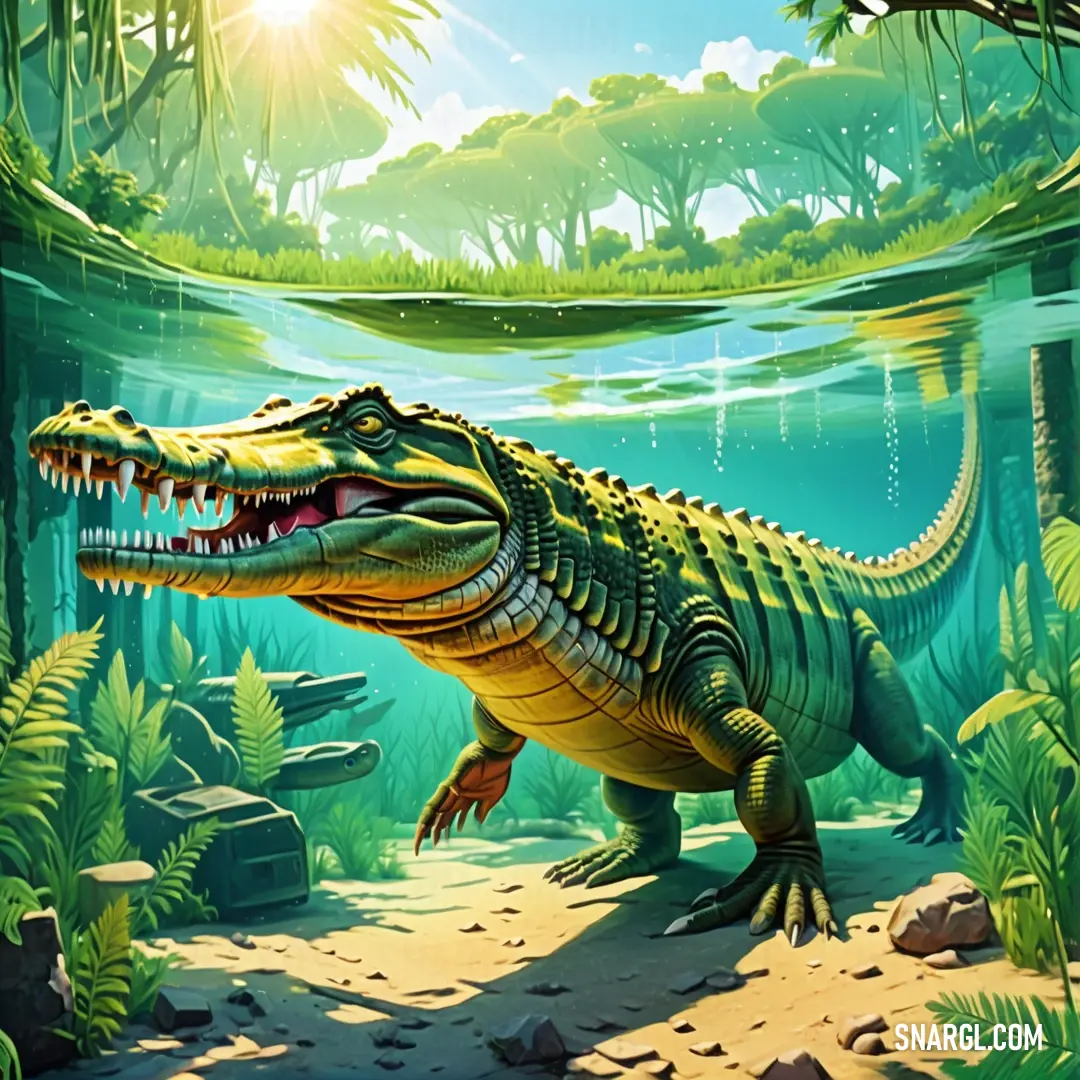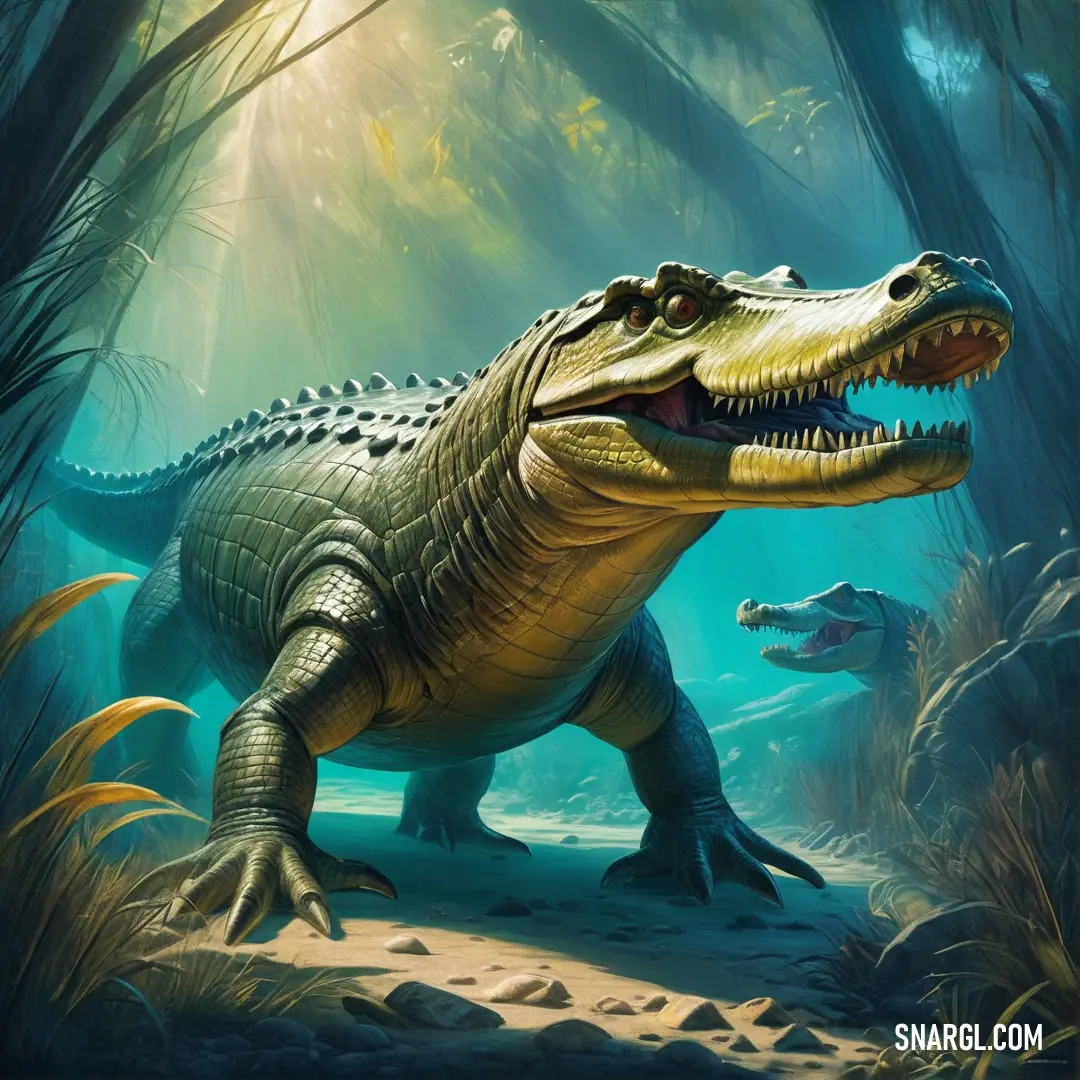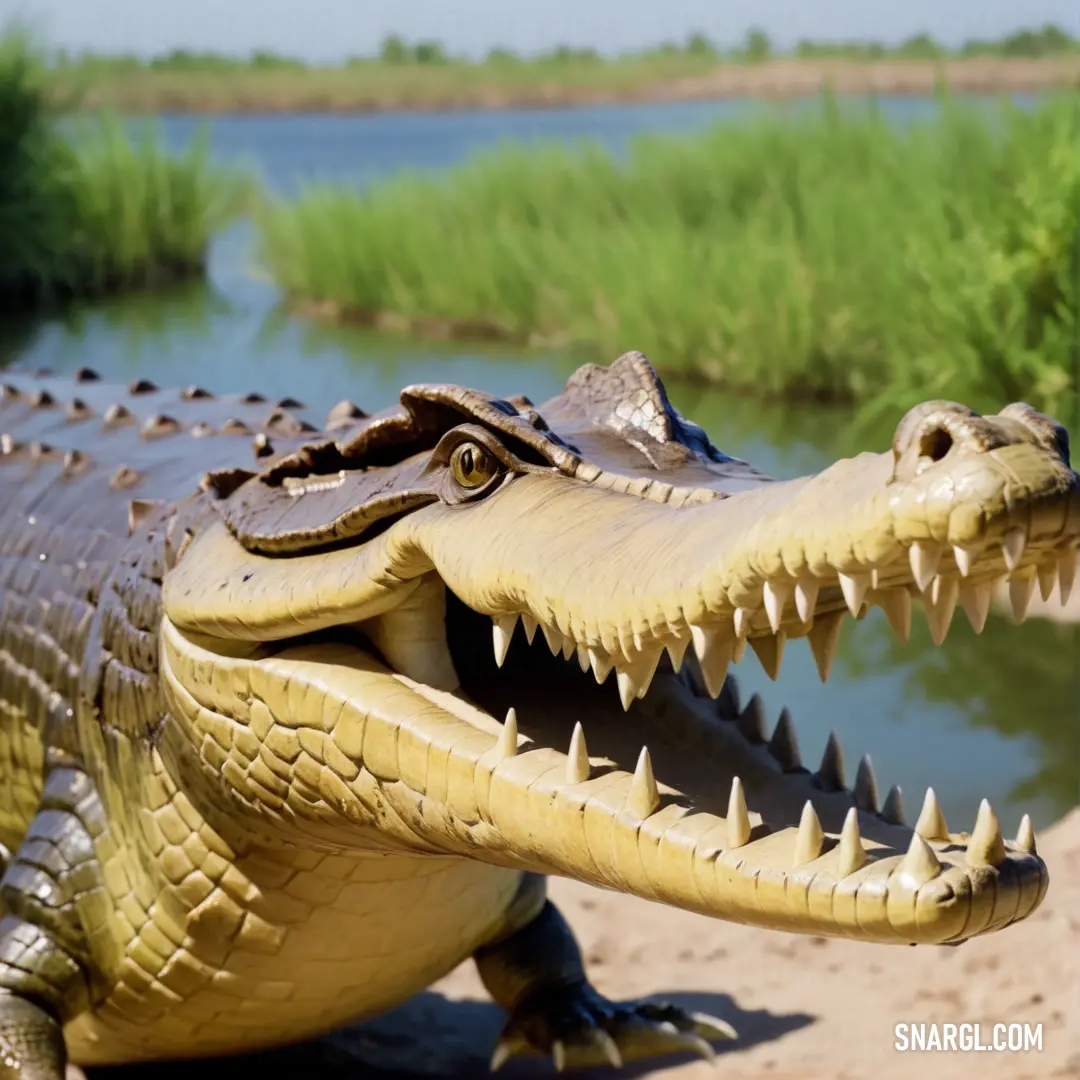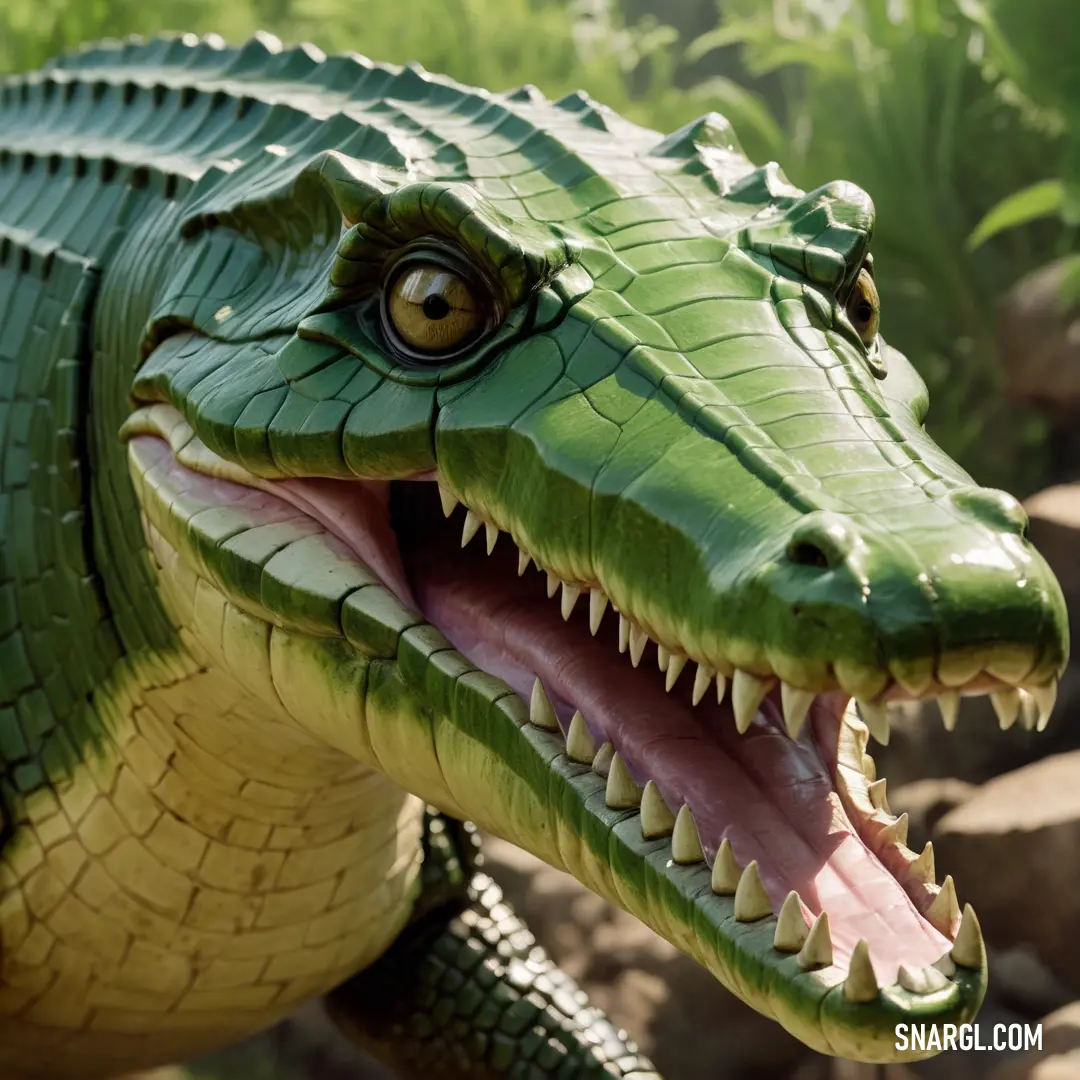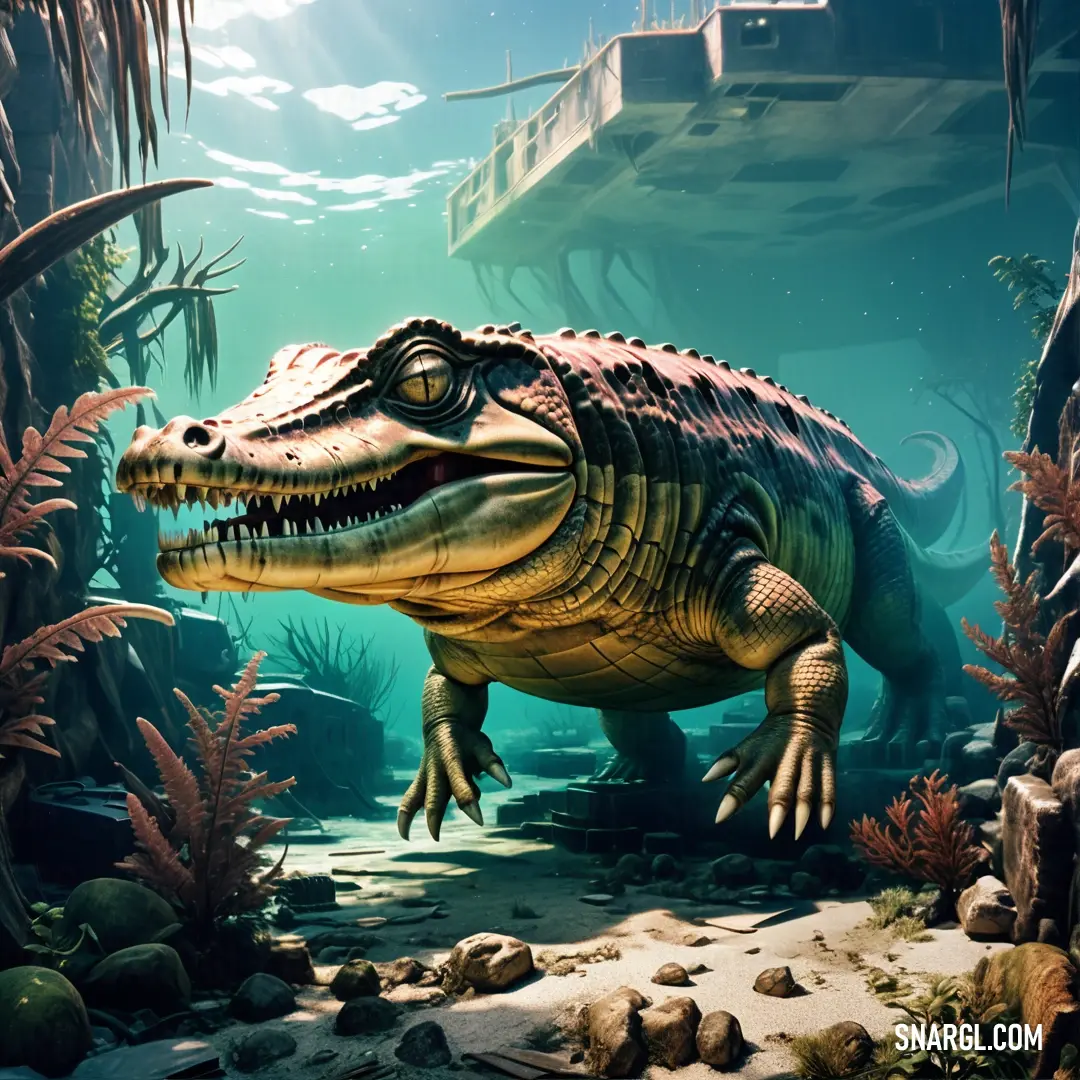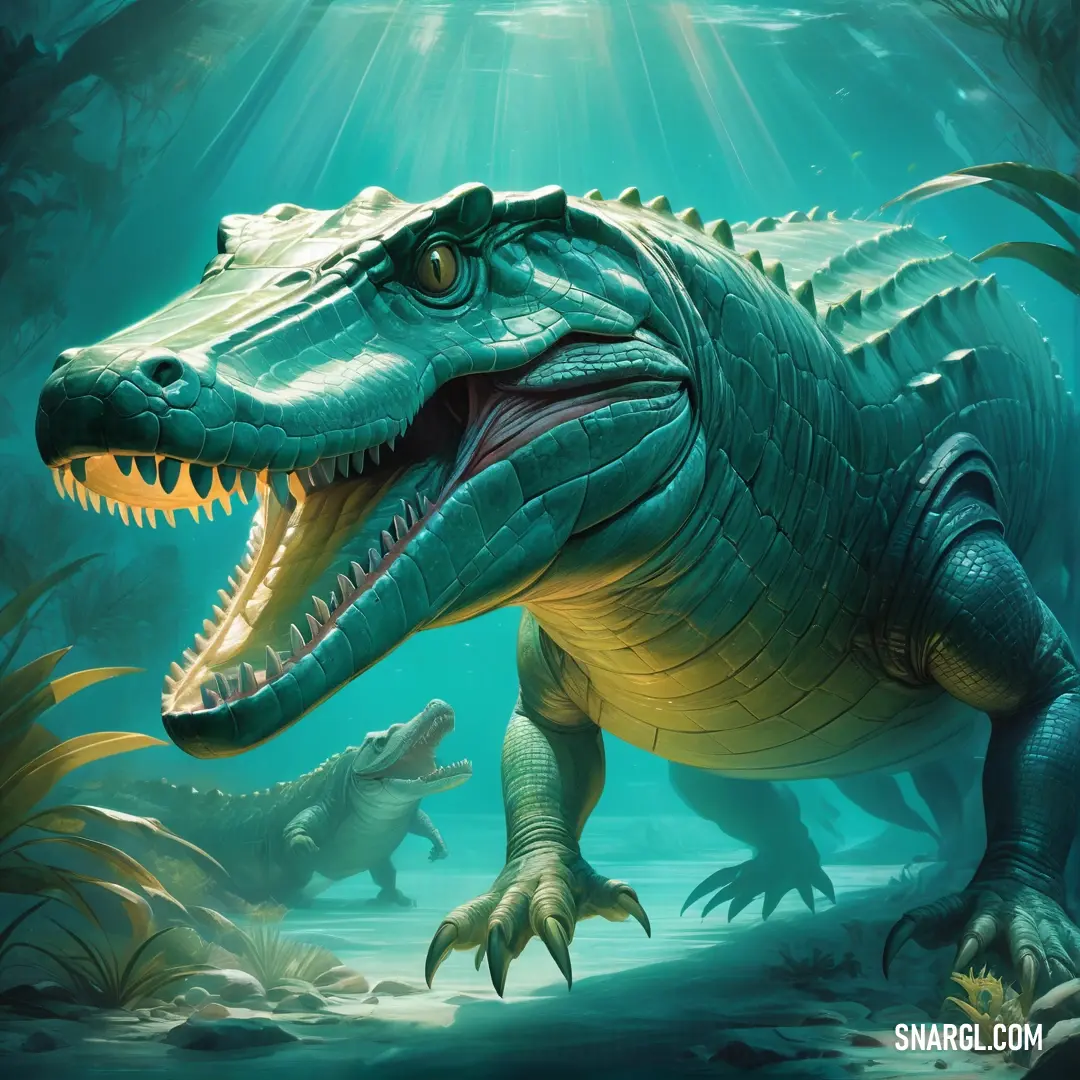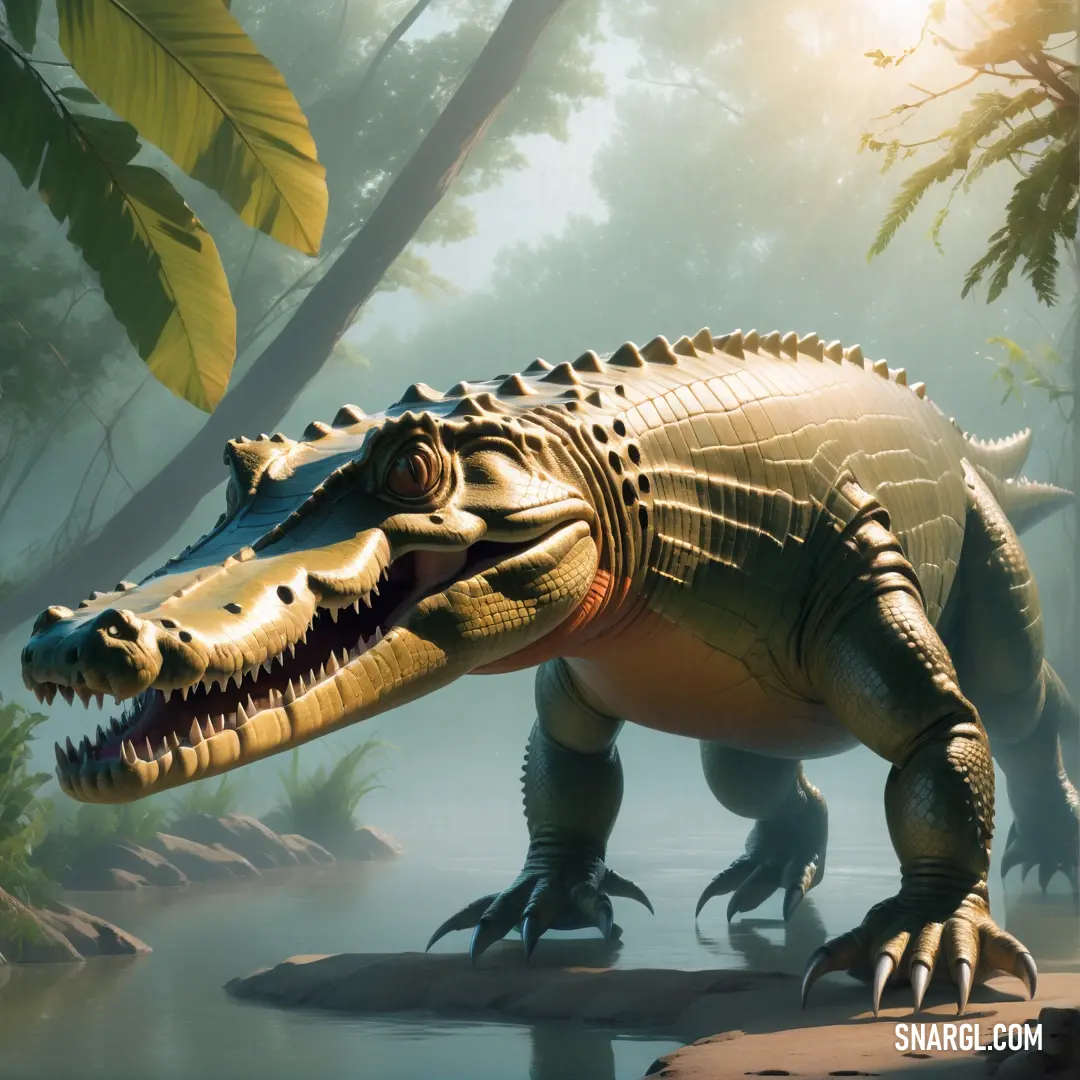Far-far away, in the quaint village of Bramblewood, where the trees whispered secrets and the flowers chuckled in the breeze, lived a dog walker named Fawn. Fawn had a soft spot for all creatures, but her favorite was Poppy, a gentle deinosuchus with scales that shimmered like emeralds and eyes as warm as autumn leaves. Poppy wasn't your typical deinosuchus. She was as kind-hearted as she was large, and the villagers adored her, often saying she had the soul of a poet trapped in a prehistoric giant.
One bright morning, Fawn and Poppy set off on their usual stroll through the village. As they wandered past the bakery, a peculiar sight caught Poppy's eye. On a table outside, a vendor was selling pea pods - little green envelopes of nature's bounty. Poppy had never seen a pea pod before, and her curiosity was piqued.
"Fawn, what's that?" Poppy asked, pointing with her massive snout at the pods.
Fawn chuckled. "Those are pea pods, Poppy. They're filled with tiny green peas. Very tasty!"
Poppy, intrigued but not quite understanding, decided to investigate further. She carefully nudged a pea pod with her nose, causing it to wobble.
The vendor, a cheerful old lady named Mrs. Hargrove, noticed Poppy's interest and decided to make the most of the situation. "Would you like to learn more about these lovely pods?" she asked with a wink.
Poppy nodded enthusiastically. "Yes, please!"
Mrs. Hargrove invited them over and began to explain. "Each pea pod contains several peas. They grow inside, nestled together. When you open the pod, you reveal the peas hidden inside. It's like a treasure hunt!"
Poppy's eyes widened with understanding. "So, the pea pod is like a tiny house for the peas?"
"Exactly!" Mrs. Hargrove replied. "And each pea is a little seed, ready to grow into a plant if given the chance."
Poppy was fascinated. She had always thought of the world in terms of grand adventures and sprawling landscapes, but the idea of something as small and simple as a pea pod having its own world within was new and enchanting.
Fawn, observing her pet's wonder, decided to turn this into a learning experience. "How about we get a few pods and open them up together?"
The idea was met with glee. Fawn bought several pea pods and they all gathered at the village park. With a gentle claw, Poppy split open a pod, revealing the bright green peas nestled inside.
Poppy's eyes sparkled. "It's like opening a surprise gift!" she exclaimed.
Fawn smiled. "Yes, and each pea is like a tiny promise of something wonderful."
They spent the rest of the afternoon opening pea pods and marveling at the little peas. Poppy, with her newfound appreciation for the small wonders of nature, began to see the world differently. She realized that beauty and excitement could be found not just in grand adventures but in the simplest of things.
As the sun dipped below the horizon, casting a golden glow over Bramblewood, Fawn and Poppy headed home, their hearts full of joy and their minds buzzing with new knowledge.
From that day on, Poppy made it a point to share her love for pea pods with the other villagers, spreading the word about the wonders of nature's little secrets. And so, in the quaint village of Bramblewood, a deinosuchus and a dog walker taught everyone a valuable lesson: that sometimes, the smallest things hold the greatest treasures.

